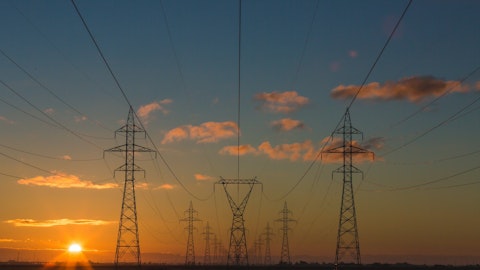And so that’s the working assumption embedded in the plan. I would say Kam 1 and 2, we do anticipate those savings coming through. We’ll see some of that in our power supply costs with just less coal procurement, but also, obviously, on the O&M side, there’s clearly less staffing attributable to gas plants versus coal. So you’ll see some of the savings there. And so that’s largely the inputs that we have flowing through that cost productivity line item or the $0.04 that you’re seeing in the waterfall from 2022 to 2023. Is that helpful?
Shahriar Pourreza: It is. That’s helpful, Rejji. Thank you, guys. That’s all I had. Congrats on the quarter. Appreciate it.
Operator: The next question comes from Jeremy Tonet from JPMorgan. Jeremy, please go ahead. Your line is open.
Jeremy Tonet: Hi, good morning. Just wanted to start off by digging into Dig a little bit if possible. And if I look at Slide 20 here, just wondering if you could walk us through, is this implant or is this upside plan? And just if you could elaborate a little bit, I guess, the future plan for DIG flip to the market or do Michigan customers want the asset? Just trying to see what’s happening there. What could happen there?
Garrick Rochow: I like the way you teed that up. We’re going to dig into DIG. It’s kind of like my Ferrari comment when I talk about DIG. I mean you may not know this, but the big plan itself is right across from the River Rouge plant where they make the Ford Lightning. And I just happened to get me a Ford Lightning about three weeks ago. So it performs well better than Ferrari. I’ll tell you that. So we’re going to call the Ford F-150 lightning in the garage from now going forward. But bottom line, here’s what we do at DIG. And it’s been a historical practice, which really serves us well as we layer in capacity contracts, multiyear capacity contracts and energy contracts over time. And as everyone knows, energy prices and capacity prices have been continuing to rise.
There’s that upward pressure in there. And so as we layer in these contracts, it’s provided additional benefit, additional return from that facility. And so that’s what we’re reflecting those contracts that have already been inked, you might say, for the improvement in performance. Now we anticipate that to continue to improve as we layer in additional contracts, particularly in — we’re about 50% contracted both for energy and capacity if you get out to the year ’26, ’27 in that time frame. So there’s potential for upside there. And I’ll have Rejji walk through what that upside looks like here in just a moment. But why don’t you do that, Rejji, then I’ll conclude.
Rejji Hayes: Yes. So just to go back to the page you referenced, Jeremy, Page 20 in the deck, you see these dark blue bars here at around $30 million. That’s a pretty good run rate for the economics we have locked in through capacity and energy contracts here in 2023. And then as you get to the outer years of the plan, you see these light blue sensitivities in the stacked bar chart, and that represents the opportunity if we start to see continued tightening and therefore, improved economics in the bilateral market. And so in the event we see capacity prices go to about $4.50 per kilowatt month. You can see the incremental upside here from a pretax income basis. And then if it gets closer to CONE, and I’ll remind everyone that Zone 7 is priced pretty much at CONE for 2 of the last three planning resource auctions.
You could see us at a higher level than that with about $25 million of upside. And so as Garrick noted, we wouldn’t see those economics until the out of years of the plan, but there’s some opportunity as margin opens up in sort of the ’25, ’26, ’27 time frame.





